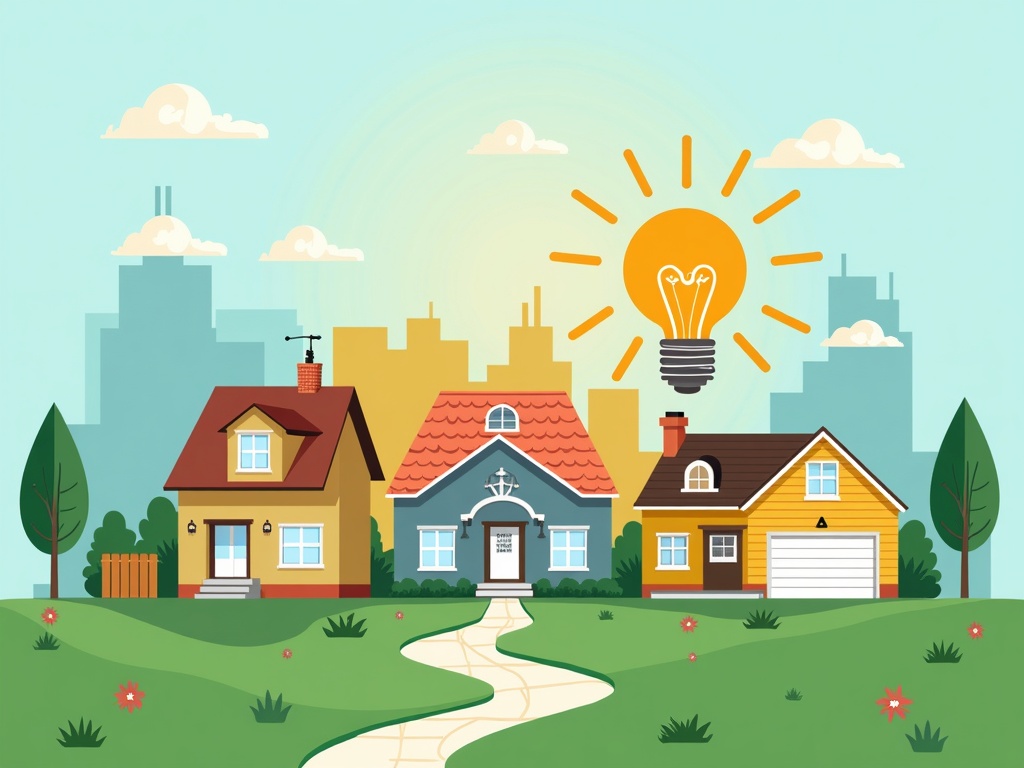Slay Your Energy Bill: A Comprehensive Guide to Lowering Electric Costs
Imagine opening your electric bill and feeling a sense of victory, not dread. It’s entirely possible! With a strategic approach and a little know-how, you can significantly reduce your energy consumption and keep more money in your pocket. This comprehensive guide breaks down proven methods, from simple habit changes to smart home upgrades, empowering you to take control of your energy costs. Let’s dive in and unlock the secrets to a lower electric bill.
Understanding Your Energy Usage
Before you can effectively lower your electric bill, you need to understand where your energy is going. Think of it as diagnosing a problem before prescribing a solution. Key areas to consider include:
- Appliances: Refrigerators, washing machines, dryers, dishwashers, and ovens are major energy consumers.
- Heating and Cooling: HVAC systems typically account for the largest portion of your energy bill.
- Lighting: Traditional incandescent bulbs are energy hogs compared to LEDs.
- Electronics: TVs, computers, gaming consoles, and chargers all contribute to your energy consumption, especially when left on or in standby mode.
- Water Heating: Heating water for showers, baths, and laundry uses a significant amount of energy.
Analyze Your Bill
Your electric bill contains valuable information about your energy usage patterns. Look for:
- Kilowatt-hour (kWh) consumption: This is the unit of measurement for electricity usage. Track your monthly kWh usage to identify trends and spikes.
- Demand charges: Some utilities charge based on your peak energy demand, which is the highest amount of electricity you use at any one time during the billing cycle.
- Time-of-use rates: If your utility offers time-of-use rates, electricity costs more during peak hours and less during off-peak hours.
Consider an Energy Audit
For a more in-depth assessment, consider scheduling a professional energy audit. An energy auditor will inspect your home, identify areas of energy loss, and provide recommendations for improvement. Some utilities even offer free or discounted energy audits.
Low-Hanging Fruit: Simple Habit Changes
Often, the easiest way to save money on your electric bill is by adopting energy-conscious habits. These small changes can add up to significant savings over time:
- Unplug Electronics: Many electronics continue to draw power even when turned off. Unplug chargers, TVs, and other devices when not in use. Use power strips with on/off switches to easily cut power to multiple devices.
- Turn Off Lights: Make it a habit to turn off lights when you leave a room.
- Use Natural Light: Maximize natural light by opening curtains and blinds during the day.
- Shorter Showers: Reducing your shower time by a few minutes can save a significant amount of water and energy.
- Wash Clothes in Cold Water: Heating water accounts for a large portion of laundry energy usage. Switching to cold water can save a considerable amount of energy.
- Air Dry Clothes: Avoid using the dryer whenever possible. Hang clothes on a clothesline or drying rack.
- Run Full Loads: Operate dishwashers and washing machines only when they are fully loaded.
Optimize Your Heating and Cooling
Heating and cooling are usually the biggest culprits behind high electric bills. Here’s how to optimize your HVAC usage:
- Smart Thermostat: Install a smart thermostat that can automatically adjust the temperature based on your schedule and preferences. These thermostats can learn your habits and optimize energy usage for maximum savings.
- Adjust the Thermostat: During the summer, set your thermostat a few degrees higher when you’re away from home. In the winter, set it a few degrees lower. Even small adjustments can make a big difference.
- Proper Insulation: Ensure your home is properly insulated to prevent heat loss in the winter and heat gain in the summer. Check insulation in attics, walls, and crawl spaces.
- Seal Air Leaks: Seal air leaks around windows, doors, and other openings with caulk or weather stripping. This will prevent drafts and keep your home more comfortable.
- Regular Maintenance: Schedule regular maintenance for your HVAC system, including cleaning or replacing filters, cleaning coils, and checking refrigerant levels. A well-maintained system will operate more efficiently.
- Use Fans: Ceiling fans and portable fans can help circulate air and reduce the need for air conditioning.
Upgrade Your Lighting
Switching to energy-efficient lighting is a simple and cost-effective way to lower your electric bill:
- LED Bulbs: Replace incandescent bulbs with LED bulbs. LEDs use up to 75% less energy and last much longer.
- Motion Sensor Lights: Install motion sensor lights in areas where you don’t need constant illumination, such as hallways, closets, and outdoor areas.
- Dimmer Switches: Use dimmer switches to adjust the brightness of your lights and save energy.
Efficient Appliance Usage
Your appliances consume a significant amount of energy. Here’s how to use them more efficiently:
- Energy-Efficient Appliances: When it’s time to replace appliances, choose Energy Star-certified models. These appliances meet strict energy efficiency guidelines.
- Refrigerator Maintenance: Keep your refrigerator coils clean and ensure the door seals tightly. A properly maintained refrigerator will operate more efficiently. Check the temperature – it should be between 37°F and 40°F (3°C and 4°C).
- Oven Usage: Avoid preheating the oven for short cooking times. Use the convection setting for faster and more even cooking.
- Microwave vs. Oven: Use the microwave for small cooking tasks instead of the oven, as it uses less energy.
Harnessing Renewable Energy
While requiring a more significant initial investment, renewable energy sources can drastically reduce your reliance on the electric grid and lower your bills long-term.
- Solar Panels: Consider installing solar panels on your roof. Solar panels can generate electricity from sunlight, reducing your reliance on the grid.
- Solar Water Heater: A solar water heater can use solar energy to heat your water, reducing your reliance on electric water heating.
Smart Home Technology
Smart home technology can help you automate energy management and optimize usage:
- Smart Plugs: Use smart plugs to control the power to electronic devices remotely. You can schedule them to turn off automatically when not in use.
- Energy Monitoring Systems: Install an energy monitoring system to track your energy usage in real-time. This can help you identify areas where you can save energy.
Water Heating Efficiency
Reducing the energy used for water heating can significantly impact your electric bill.
- Lower Water Heater Temperature: Reduce the temperature setting on your water heater to 120°F (49°C).
- Insulate Water Heater: Insulate your water heater to prevent heat loss.
- Low-Flow Showerheads and Faucets: Install low-flow showerheads and faucets to reduce water consumption.
- Fix Leaks: Repair any leaks in your plumbing system to prevent water waste.
Community Solar Programs
If you can’t install solar panels on your own property, consider participating in a community solar program. These programs allow you to purchase electricity from a shared solar array.
Rebate and Incentive Programs
Many utilities and government agencies offer rebates and incentives for energy-efficient upgrades. Check with your local utility and government agencies to see what programs are available in your area.
Regularly Review and Adjust
Lowering your electric bill is an ongoing process. Regularly review your energy usage, identify areas where you can improve, and adjust your strategy accordingly. By continuously monitoring and optimizing your energy consumption, you can achieve significant savings over time.
The Power is in Your Hands
Reducing your electric bill is a journey, not a destination. By implementing these strategies and staying committed to energy conservation, you can achieve significant savings and create a more sustainable lifestyle. Start with the simple steps, explore the more advanced options, and watch your energy bill shrink—and your savings grow. The power to save is truly in your hands!

